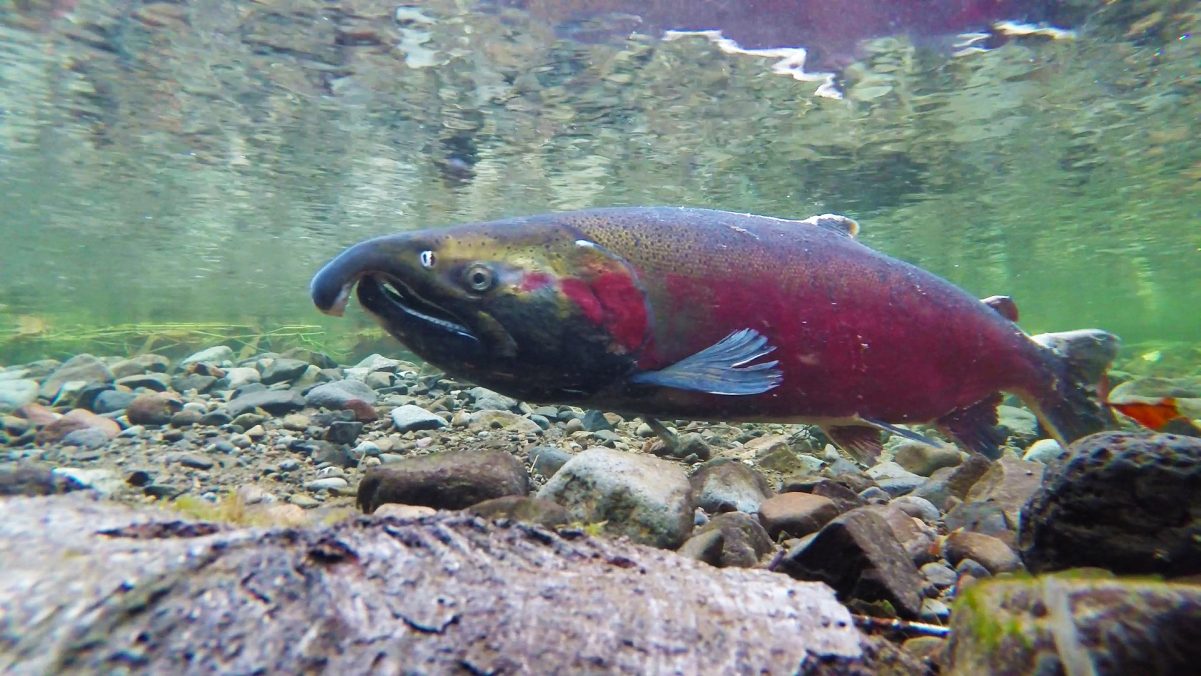July 17, 2023 — Last week, a ruling by the U.S. District Court for the Northern District of California marked a significant setback for the federal “Safe Harbor” program in operation on the Shasta River. The program had granted a dam owner and water diverters the right to infringe upon the threatened coho salmon’s habitat, in return for only meager “stewardship” efforts on privately held lands. The Western Environmental Law Center reports that the court has now suspended the program, declaring the baseline biological opinion and environmental assessment void.
reports that the court has now suspended the program, declaring the baseline biological opinion and environmental assessment void.
In light of this July 11 ruling, the National Marine Fisheries Service (NMFS) is obligated to develop a revised biological opinion and a more comprehensive environmental impact statement, in compliance with both the Endangered Species Act and the National Environmental Policy Act.
Historically, the Shasta River was a primary tributary for salmon breeding in the Klamath River. However, low numbers of coho salmon are now returning to the Shasta River each year, with fewer than 50 recorded annually compared to a target in the thousands. In recent times, the river has been repeatedly left dry due to irrigation.
Sangye Ince-Johannsen, an attorney at the Western Environmental Law Center , hailed the ruling as a triumph for common sense, the Shasta River coho salmon, and the clients they represent who have suffered significant losses due to the dwindling salmon populations. They accused the NMFS of approving practices that exacerbated the conditions on the Shasta River, favoring irrigation over the preservation of the endangered coho salmon. Ince-Johannsen warned that the previously issued 20-year, transferable permits could have further depleted the coho salmon population in the Shasta River, potentially to extinction.
, hailed the ruling as a triumph for common sense, the Shasta River coho salmon, and the clients they represent who have suffered significant losses due to the dwindling salmon populations. They accused the NMFS of approving practices that exacerbated the conditions on the Shasta River, favoring irrigation over the preservation of the endangered coho salmon. Ince-Johannsen warned that the previously issued 20-year, transferable permits could have further depleted the coho salmon population in the Shasta River, potentially to extinction.
The NMFS’ Shasta River safe harbor agreements were designed to reverse the coho salmon’s historical decline. While these agreements involving 14 permittees were intended to contribute a “net conservation benefit,” critics argue they failed to hold landowners responsible for the harm they inflicted on the coho salmon population. Even if all 14 agreements were implemented effectively, the cumulative impact would have been insufficient to halt or reverse the species’ decline.
Tom Wheeler, executive director of Environmental Protection Information Center, reiterated the importance of preserving the coho salmon and reviving the Shasta River as a sustainable fishery. He emphasized the unacceptable nature of salmon extinction for both human and non-human communities, the former including tribal communities dependent on the salmon, and the latter in which salmon play a crucial role in healthy ecosystems.
Several other voices echoed similar sentiments, expressing concern over NMFS’s implementation of the Safe Harbor program. Bill Chesney, a retired California Department of Fish and Wildlife fisheries biologist, and Nick Joslin, a fifth-generation river user, both criticized the program’s failure to prioritize sufficient conservation measures, arguing it had instead been co-opted to subsidize destructive practices under the guise of minimal habitat improvements.
According to the Western Environmental Law Center’s press release, the program had participants, including billionaire Red Emmerson of Sierra Pacific Industries, paying $1,600 annually to gain legal immunity and millions of dollars in taxpayer-funded property improvements, while causing harm to the endangered coho salmon.
Image:
BLM image of Coho Salmon from its fisheries program in Washington and Oregon, via Wikimedia Commons.
from its fisheries program in Washington and Oregon, via Wikimedia Commons.


Leave a Reply